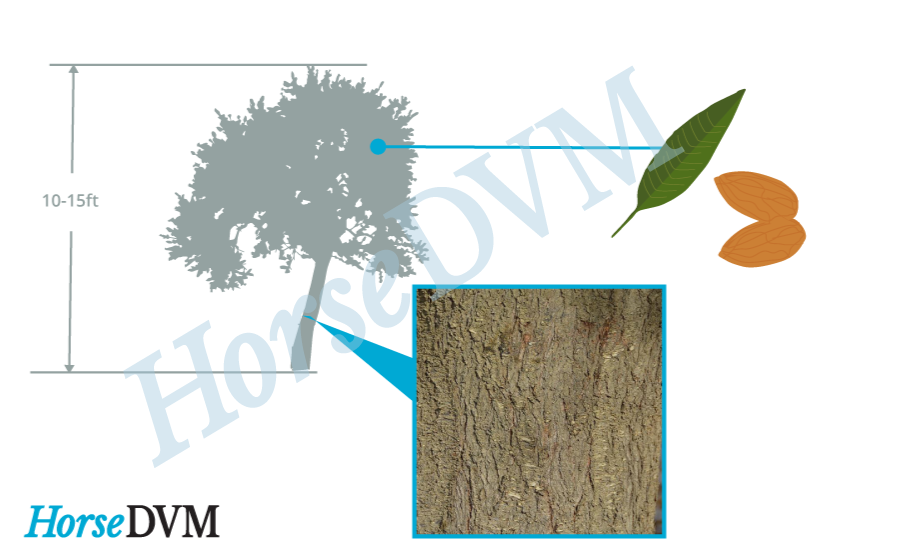Bitter almond tree (
Prunus dulcis) is a dense, rounded, deciduous tree or large multi-stemmed shrub which are commercially grown for their edible nuts. It is grown worldwide although primarily native to western Asia.
P. dulcis appear similar to the peach tree. The bitterness of almond is determined by the amount of the cyanogenic diglucoside, amygdalin in the plant tissue.
Toxic Components
Bitter almond tree parts contain two main cyanogenic glycosides, prunasin in the vegetative organs (leaves, flowers, roots, bark, twigs) and amygdalin exclusively in seeds or pits. Bitter almond trees usually only contain small amounts of these compounds, so unless horses consume an excessive amount of the plant parts, cyanide poisoning is highly unlikely. However, young, rapidly growing leaf tissue and seeds tend to contain increased amounts of cyanogenic glycosides. Toxicity levels also increase during periods of frost, drought, application of 2,4-D herbicides, nitrate fertilization, low phosphorous soil levels, and cool moist growing conditions. As cyanide release requires hydrolysis in the gastrointestinal tract, features of poisoning may be delayed for a few hours.
